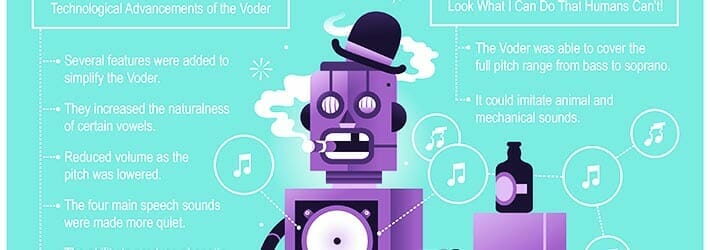- Log In
- Support
- Company
- Contact Us
- Live answers @ 1-888-532-4794
The Voder: the first voice synthesizer.

There is no question that making your computer talk is pretty cool. It’s cool for the kid making a prank phone call all the way up to the executive using it in a text to speech capacity to read emails aloud. From a call center perspective, it’s cool because talking computers, or voice synthesizers, are a huge part of IVR technology (Interactive Voice Response if you aren’t “in-the- know”). Simplified, IVR technology makes it so you can talk to computers and make them do stuff.
If you ever called your phone company or your bank and spoken commands to a computer, you are interacting with an IVR. When that “computer” responds to you, that’s actually a neat little piece of programming inside the IVR software that synthesizes human speech.
Like all things in the technology world, the natural voice synthesizer that you are most likely cursing at because you want to speak with a human being, didn’t just fall out of the sky.
“Watch Out Below! It’s a Voice Synthesizer!”
Much like how telephone evolution up to the iPhone is rooted in finding a better way to communicate over long distances other than just screaming really loud, human voice synthesizers as we know them today evolved from a crazy invention called “The Voder.”
The Voder was a manually operated speech synthesizer developed way back in 1939. Since Specialty Answering Service loves everything about communication, we thought it would be neat to make an infographic about the history of The Voder, which is really the history of speech synthesis, which is really the history of IVR, which is really why we love The Voder!

If you are hungry for more information, we’ve written a pretty extensive white paper on The Voder. It has all kinds of pictures and schematics for any telecommunications junkies out there.
And if you are thinking, “Hey. Specialty knows a lot about telecom stuff. I bet they are an amazing telephone answering service,” you’d be right!
Categories
- Advice (32)
- Answering Service 101 (18)
- Best Practices (10)
- Call Center Jobs (6)
- Call Center Software (20)
- Comparison (2)
- Customer Service (30)
- Funny (31)
- Holidays (19)
- Industry Hacks (19)
- Infographics (53)
- International (1)
- Medical (8)
- News (12)
- Phone Etiquette (2)
- Phones (14)
- Pricing (8)
- Quizzes (3)
- Receptionist (11)
- SAS Products (29)
- Scripting (4)
- Services (5)
- Small Business (25)
- Starting Up (7)
- Tips and Tricks (19)
- Uncategorized (1)
- Videos (19)
- Workplace (6)
Recently writen
- Call Center Script Best Practices: Advanced Script Block Tips to Optimize Your Answering Service
- January 2025 Release Notes – Adjustments to Call Details Timeline, New Scripting Updates, Live Transcription, and more!
- April 2024 Release Notes – Voicemail Greetings, Ability to Access Websites With a Username and Password, and more!
- March 2024 Release Notes – New Add-On, Settings Revamp, and more!
Follow Us
How about a demo?
We'll show you how our web portal works and answer any questions you have about SAS.
Schedule a demo







